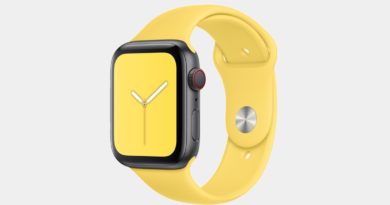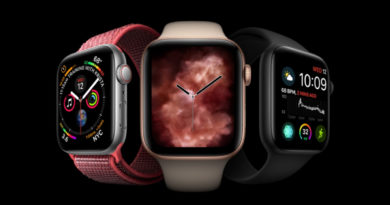Here’s what Google got from Fossil in its $40 million deal
In 2015, Fossil Group paid $260 million to acquire Misfit in one of the biggest acquisitions in wearable technology ever. The deal converted to a significant amount revenue for Fossil, with sales of its connected wearables soaring to $300 million in 2017, accounting for 14% of all its watches sold that year.
But back in January, Fossil announced it had sold undisclosed intellectual property to Google for just $40 million, with Google telling us at the time it had acquired a “new product innovation that’s not yet hit the market”.
Essential reading: Best Wear OS smartwatches to buyThat innovation is specifically a hybrid smartwatch technology built by Fossil, according to several sources familiar with the deal who spoke to Wareable on the agreement of anonymity. Fossil refused to comment on the terms of the deal. Google told Wareable: “We don’t comment on rumors or speculations.”
The watch movement, which Google paid to have license to, is referred to internally at Fossil as ‘Diana’ (an amalgam of “Digital” and “Analogue”) and was built by talent acquired by Misfit in 2015. There are variations of ‘Diana’, with different designs combining physical watch features with digital elements – some with screens, some without – and sources say Google could use one, some or none of these for its own smartwatch, should it build one.
‘Diana’ consumes much less power than than a regular smartwatch
But the $40 million also included 20 engineers being handed over to Google, gutting Fossil of a lot of tech talent. Sources say Google was more interested in the talent than the ‘Diana’ technology, with one person referring to the deal as an “acqui-hire”.
According to people familiar with the terms of the deal, Fossil felt pressure to sell to Google because of large ongoing expenses of supporting its engineering talent, as well a desire to recoup money that had been poured into development on its own hybrid movements, including ‘Diana’, which sources say cost Fossil significantly.
A bad fitFossil snapped up Misfit in 2015 shortly after it launched its first smartwatch, the Fossil Q Founder, which was built using Intel’s technology (Fossil would later turn to Qualcomm for its processors). Several sources described the Q Founder as a misstep for Fossil, claiming sales were well below 10,000 units.
When Misfit was brought in, the team were given the job of transferring Bluetooth stacks and other vital components into a new app, but sources say this proved an impossible task and Fossil was forced to continue supporting the first Founder Q smartwatch in the Fossil Q Legacy app, which it still has today, while all subsequent watches have connected using the newer ‘Fossil’ app.But tensions between Misfit talent and Fossil were mounting for other reasons: Fossil had underestimated the expense of supporting a tech team, and was suddenly paying out a lot of large salaries to its newly-acquired talent. “You have some 25-year-old engineer making the same as a director of marketing in Dallas,” one source described. “So the director is like, what the hell?”
Fossil and Misfit also had different philosophies about wearable technology, and this only compounded the tensions. Traditionally a fashion watch company, Fossil’s priority was design, but sources say this caused friction with Misfit talent who were pitching ideas to use marketing data and monthly cloud payments to form new revenue streams. Fossil pushed back, and it caused frustration within the tech team, say people who were privy to these conversations.
Fossil also asked Misfit to scrap a 4K 360-degree smart camera it was working on pre-acquisition, but Misfit employees insisted the technology could be sold off, and quickly did so to Axon Enterprise, producer of TASER devices. The amount wasn’t disclosed but one source called it “very good money”.
You have some 25-year-old engineer making the same as a director of marketing in Dallas
At the same time, Fossil was spending “significant” amounts of money developing its own hybrid smartwatch movements. In 2018, in order to recoup some of the costs spent on these movements, Fossil Group struck up a partnership with Citizen. The terms were that Citizen would use the Fossil-built movements in watches it built for other partners, and Fossil would receive royalty payments for each watch sold.
“Fossil was already buying micro motors from Citizen to make its hybrid movements before this, and that commercial deal was fine, but over time it became clear the hybrid business wasn’t a big thing. They needed more reach beyond the Fossil brands,” described a source who was involved in the Fossil-Citizen deal. They also described the initial movement Fossil gave Citizen as “a terrible design”, which Citizen had to re-engineer before using.
“It was a way for Fossil to expand their hybrid business outside of their brands without looking like they were competing with themselves,” they added.
But this wasn’t enough, and Fossil needed to recuperate more of its losses, so conversations with Google about a deal started. The deal, which was announced at the start of this year, gave Google the rights to ‘Diana’.
The movement consumes much less power than than a full smartwatch, according to one source who worked on building it. Google paid for a license share agreement giving it access to “several variations” of that movement, sources say, along with the software, firmware and mechanical technology – and 20 engineers who worked on the technology.
They overhired and over-acquired
“It was a terrible deal,” said one person who was involved in the matter and believed Fossil’s technology and talent was worth much more. They described Fossil’s remaining San Francisco office as a “skeleton team” that exists only to support legacy deals with Citizen and others. “They overhired and over-acquired. It was too much operating expense,” they said. “So instead of having to fire 50, 80 people or whatever, they did these deals.”
Selling to Google left Fossil with a much leaner operating model with fewer engineers, with many of the remaining tech talent based in Fossil’s Vietnam office.
Shortly after the $40m deal with Google was announced, Greg McKelvey, EVP and chief strategy and digital officer of the Fossil Group told Wareable, “The Fossil Group will bring the product to market, across our full breadth of brands over time, and then in true Google fashion, the technology will be expanded across the industry over time to benefit all.”
There have long been rumors that Google is working on a ‘Pixel Watch’, and this acquisition certainly adds fuel to the fire. It’s the biggest signal from Google yet that it’s interested in building its own hardware, but it’s unclear whether ‘Diana’ will become the Pixel Watch, or if Google will partially leverage the technology for its own devices.


